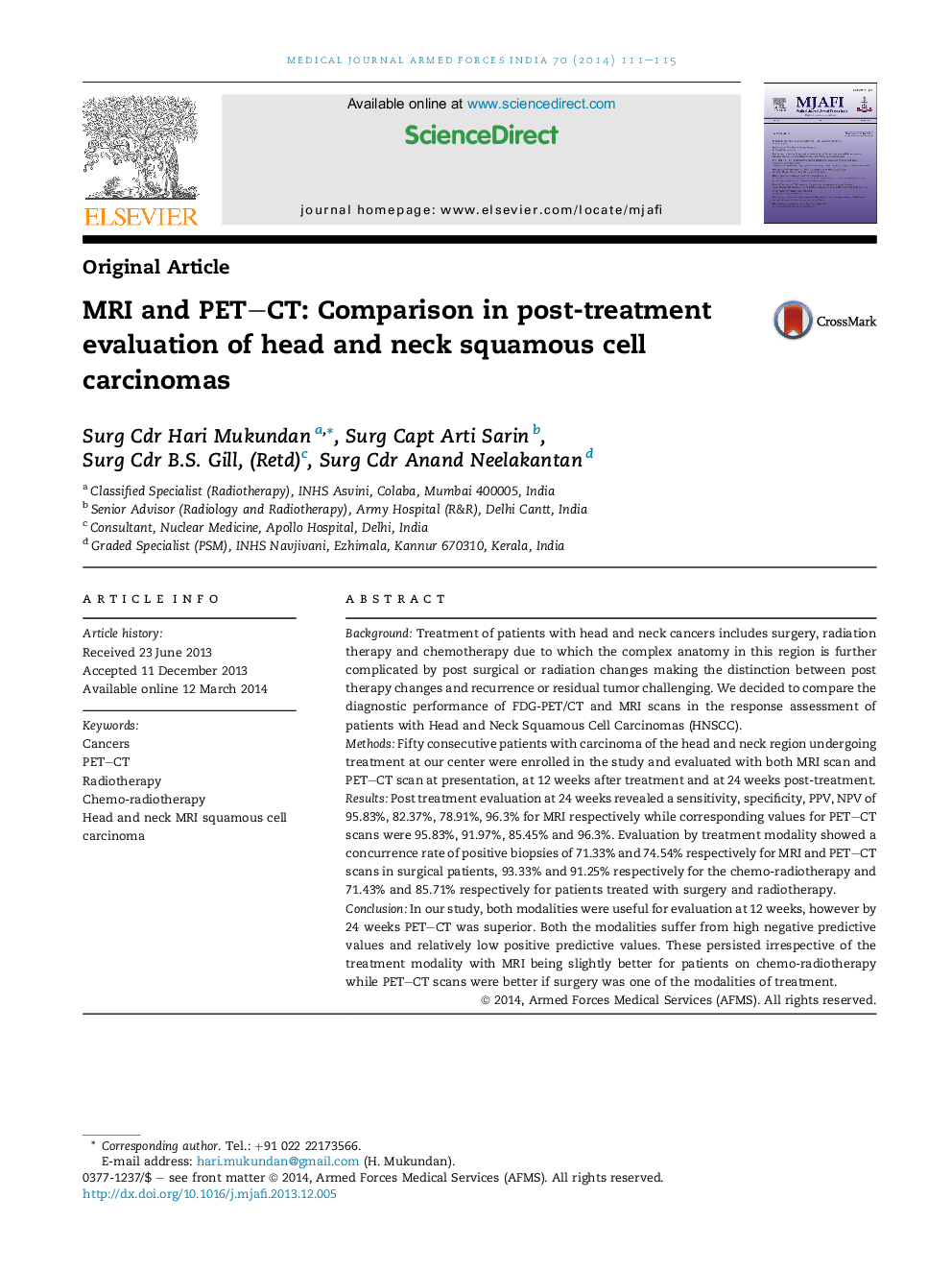| Article ID | Journal | Published Year | Pages | File Type |
|---|---|---|---|---|
| 3161336 | Medical Journal Armed Forces India | 2014 | 5 Pages |
BackgroundTreatment of patients with head and neck cancers includes surgery, radiation therapy and chemotherapy due to which the complex anatomy in this region is further complicated by post surgical or radiation changes making the distinction between post therapy changes and recurrence or residual tumor challenging. We decided to compare the diagnostic performance of FDG-PET/CT and MRI scans in the response assessment of patients with Head and Neck Squamous Cell Carcinomas (HNSCC).MethodsFifty consecutive patients with carcinoma of the head and neck region undergoing treatment at our center were enrolled in the study and evaluated with both MRI scan and PET–CT scan at presentation, at 12 weeks after treatment and at 24 weeks post-treatment.ResultsPost treatment evaluation at 24 weeks revealed a sensitivity, specificity, PPV, NPV of 95.83%, 82.37%, 78.91%, 96.3% for MRI respectively while corresponding values for PET–CT scans were 95.83%, 91.97%, 85.45% and 96.3%. Evaluation by treatment modality showed a concurrence rate of positive biopsies of 71.33% and 74.54% respectively for MRI and PET–CT scans in surgical patients, 93.33% and 91.25% respectively for the chemo-radiotherapy and 71.43% and 85.71% respectively for patients treated with surgery and radiotherapy.ConclusionIn our study, both modalities were useful for evaluation at 12 weeks, however by 24 weeks PET–CT was superior. Both the modalities suffer from high negative predictive values and relatively low positive predictive values. These persisted irrespective of the treatment modality with MRI being slightly better for patients on chemo-radiotherapy while PET–CT scans were better if surgery was one of the modalities of treatment.
